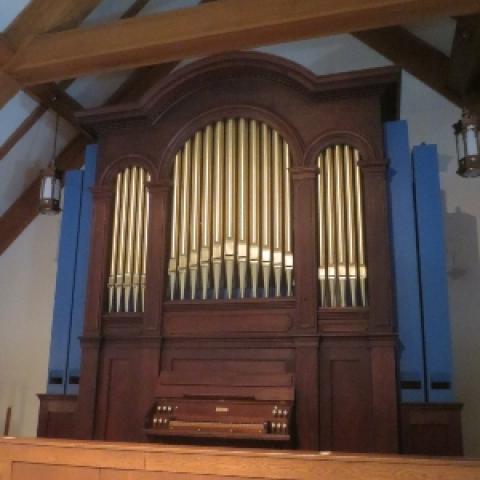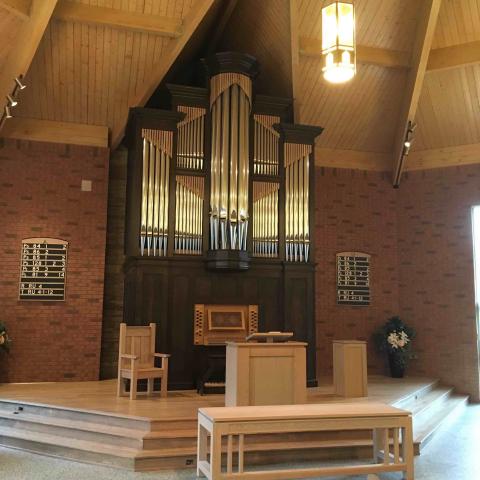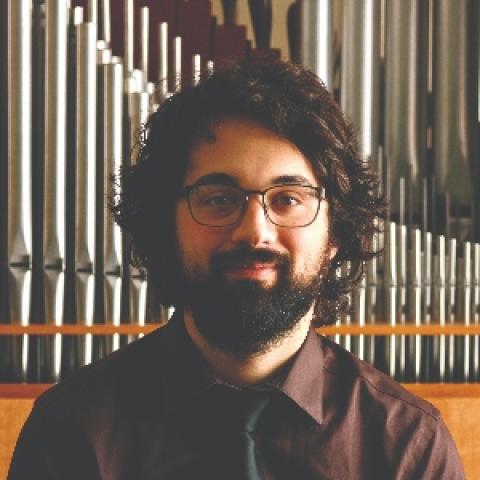
David E. Wallace & Co., LLC, Pipe Organ Builders of Gorham, Maine, has been selected to provide the restorations of several unique 19th-century pipe organs.
Recently completed was the restoration of the 1854 E. & G. G. Hook Opus 177 for First Congregational Church, Kennebunkport, Maine. The one-manual, nine-rank organ was built originally for South Congregational Church, Kennebunkport, and was donated and moved to First Congregational in 1919.
The organ had a few minor structural alterations to allow it to fit in its new setting. As part of the restoration, those alterations were changed back to what the restorers felt was the original configuration for the Pedal windchest. A unique feature of the organ is the independent 8′ Principal for the 13-note Pedal. The organ remains tonally unaltered and is now back in playing form. Kevin Birch of St. John’s Church, Bangor, Maine, played the rededication recital, June 7, 2019.
The 1893 George Jardine & Son Opus 1123 at Sacred Heart Catholic Church, Yarmouth, Maine, is undergoing a renovation of its Pedal division. The organ was built for Russell Sage Memorial Church, Far Rockaway, Queens, New York, and sold in 1985 to Sacred Heart Church. The Pedal is being expanded by Wallace to include appropriately scaled 16′ Subbass, 16′ Bourdon, and 8′ Violoncello ranks. The ranks replace a difficult to register, large-scaled Bourdon. This work completes a series of renovation projects for the instrument.
For information: www.wallacepipeorgans.com.







